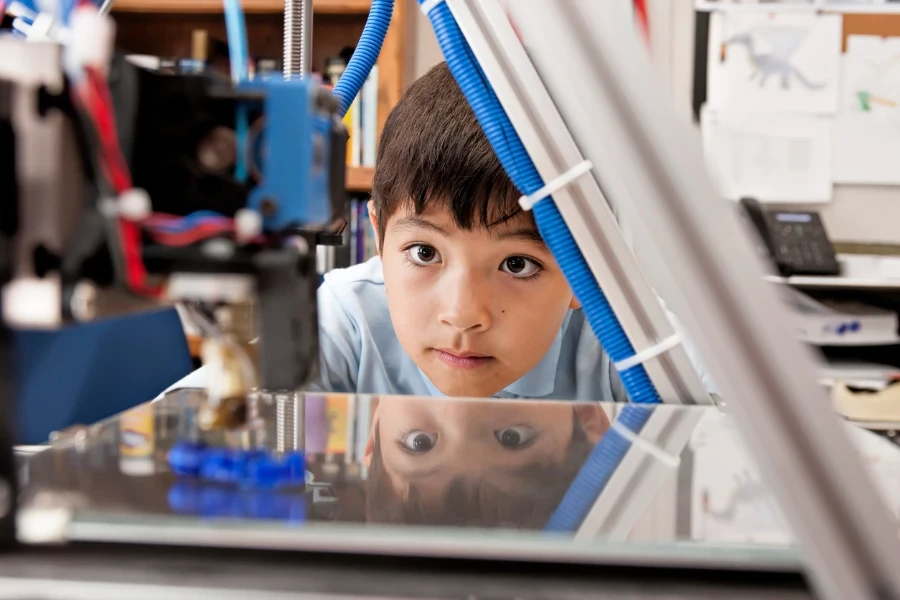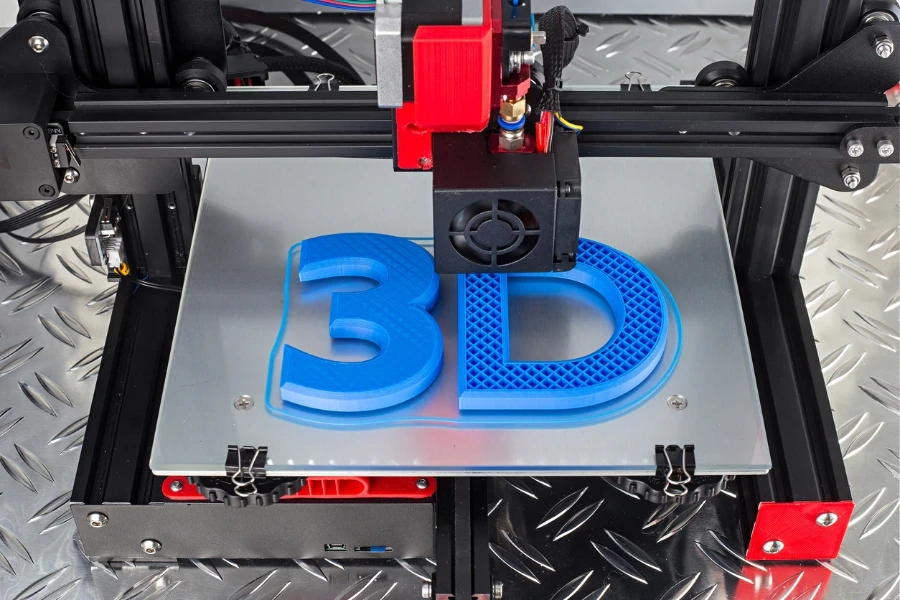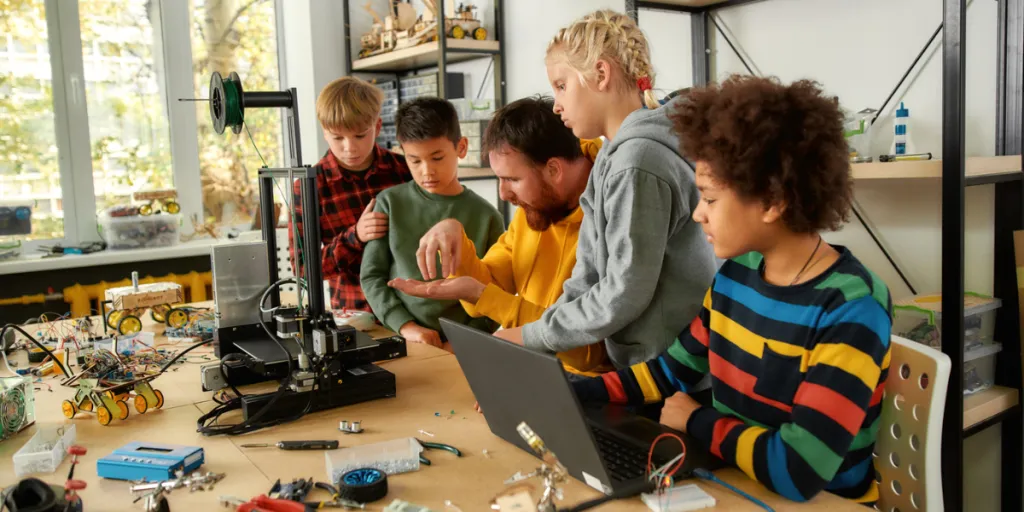3D printers have found applications across diverse sectors, making them a valuable addition to many tech businesses’ product lineups. Looking for the best 3D printers on the market for beginners in 2024? You’ve come to the right place. Here, we outline the best 3D printers to add to your product lineup this year that are specifically suited for those new to 3D printing.
Want to learn more about 3D printing so you can give your customers the best advice? Learn more about 3D printing basics here.
Not quite sure if selling 3D printers is the right fit for your business, but still want to get into this growing market? Check out our guide on selling 3D printers to determine if it’s a good fit for your business.
Table of Contents
Understanding the 3D printing market
Key considerations for first-time 3D printer buyers
Best 3D printers for beginners
Final thoughts
Understanding the 3D printing market
Before diving into our top picks, let’s look at the state of the 3D printing market. According to Grandview Research, the global 3D printing market was valued at over US $20 billion in 2023 and is projected to grow at a compound annual growth rate (CAGR) of 23.5% between 2024 and 2030.
In 2023, North America emerged as the dominant force, commanding over 33% of global revenue, signaling a robust foothold in this transformative technology.
Key considerations for first-time 3D printer buyers

When someone is new to 3D printing and considering purchasing their first 3D printer, several key factors should be evaluated to ensure they select a model that best meets their needs and expectations.
Here are some important considerations for beginners in 3D printing:
- Printer type: It is crucial to understand the different types of 3D printing technologies. The most common type for beginners is fused deposition modeling (FDM), which is relatively easy to use and maintain. Resin printers (using stereolithography, SLA, or digital light processing, DLP) offer higher resolution but require more careful handling of materials and more involved post-processing.
- Build volume: Consider what size objects will be printed. A printer’s build volume determines the maximum size of the objects it can produce. For most beginners, a small to medium build volume will suffice for various projects, from prototypes to household items.
- Material compatibility: Different printers support different types of materials. FDM printers commonly use PLA and ABS filaments, which are user-friendly and suitable for a wide range of applications. Some printers also support specialty materials like flexible filaments or composites, which could be necessary depending on the intended use.
- Print quality and resolution: Print quality is influenced by various factors, such as layer height and printer calibration. Beginners should look for a printer that consistently produces clean and accurate prints. Higher resolution is better for detailed models but might be less crucial for larger, less detailed prints.
- Ease of use: Look for features that simplify the printing process. This includes auto-leveling beds, intuitive user interfaces, and clear instructions. Many modern printers come with touchscreen controls and user-friendly software, which are great for beginners.
- Software: The software used to slice and control 3D prints can significantly affect the printing experience. Some printers come with proprietary software, while others rely on open-source programs. User-friendly software with good support and community backing is ideal for beginners.
- Connectivity and control: Consider how beginners will interact with the printer. Connectivity options include USB, SD card, or Wi-Fi connectivity. Some printers can also be controlled remotely via apps, adding convenience.
- Reliability and support: Check reviews and community forums to gauge the printer’s reliability. Good customer support is vital, especially for those new to 3D printing. The availability of replacement parts and a helpful user community are also important factors.
For beginners, it’s often recommended that they start with a well-supported, moderately priced printer from a reputable manufacturer that balances ease of use, functionality, and room for growth as their skills advance.
Best 3D printers for beginners

Here are our top 3D printer picks for beginners:
| Top pick:Bambu Lab A1 Mini | Budget pick:Kingroon KP3S 3.0 | Upgrade pick:Bambu Lab P1P | |
| Market price (USD, approx.) | $299 | $139 | $599 |
| Build volume | 180 × 180 × 180 mm | 180 × 180 × 180 mm | 256 × 256 × 256 mm |
| Temperatures (Nozzle/Bed) | <300 °C / <80 °C | <260 °C / <110 °C | <300 °C / <100 °C |
| Print bed | Steel, magnetic, PEI sheet | Magnetic sticker sheet | Steel, magnetic, PEI sheet |
| Bed leveling | Automatic | Manual | Automatic |
| Print recovery | Yes | Yes | Yes |
| Filament sensor | Yes | No | Yes |
| Networking | Desktop, smartphone | N/A | Desktop, smartphone |
| Dimensions | 347 × 315 × 365 mm | 280 × 285 × 370 mm | 386 × 389 × 458 mm |
| Instruction manual | Detailed instructions | Clear, illustrated instructions | Detailed instructions |
| Build difficulty | Pre-assembled | Simple, doable in under 30 mins | Pre-assembled |
Bambu Lab A1 Mini: Simplicity redefined
The Bambu Lab A1 Mini emerges as a standout choice for beginners, offering a blend of affordability and functionality. Priced around US $299, this compact printer doesn’t compromise on performance. With a modest build volume of 180 × 180 × 180 mm, it’s ideal for small-scale projects.
What sets the A1 Mini apart is its user-friendly interface and seamless operation. Equipped with Bambu Lab’s MakerWorld repository, users can effortlessly print with just one click, eliminating the hassle of G-code manipulation.
Additionally, features like self-calibration, over-the-air updates, and error diagnosis enhance the overall printing experience. Despite minor interface lags, the A1 Mini delivers consistent print quality, making it an excellent choice for beginners venturing into 3D printing.
Kingroon KP3S 3.0: Affordable versatility
For those on a tight budget, the Kingroon KP3S 3.0 offers an attractive entry point into 3D printing, priced at approximately US $140. Sporting linear rails for enhanced durability, the KP3S 3.0 boasts a build volume identical to the A1 Mini, making it suitable for beginners exploring basic printing projects.
While assembly is required, illustrated instructions simplify the setup process, making it accessible even for novices.
Despite minor quirks like endstop adjustments, the KP3S 3.0 impresses with its print quality and upgrade potential. With a vibrant community backing, users can easily enhance the printer with aftermarket accessories, further extending its capabilities.
Overall, the KP3S 3.0 is a reliable and cost-effective option for beginners who want to try 3D printing.
Bambu Lab P1P: Premium performance
For enthusiasts seeking premium features and unparalleled performance, the Bambu Lab P1P reigns supreme. Priced at US $599, this printer offers comprehensive features tailored for beginners and veterans alike.
Boasting a generous build volume of 256 × 256 × 256 mm and CoreXY kinematics, the P1P delivers exceptional print quality with blazing-fast speeds. The inclusion of Bambu Lab’s Automatic Material System (AMS) enables multi-material printing, unlocking creative possibilities for users.
Despite a dated screen, the P1P compensates with network connectivity and intuitive companion software, simplifying troubleshooting and support. Customizable side panels add a personal touch to the printer, making it stand out in any workspace. With automated bed leveling and vibration compensation, the P1P offers a hassle-free printing experience, making it the ultimate choice for discerning beginners and seasoned enthusiasts.
Final thoughts
By offering these top-tier options, you can guide consumers new to 3D printing toward fulfilling and successful experiences, establishing yourself as a trusted provider of cutting-edge technology in the ever-evolving world of additive manufacturing.




